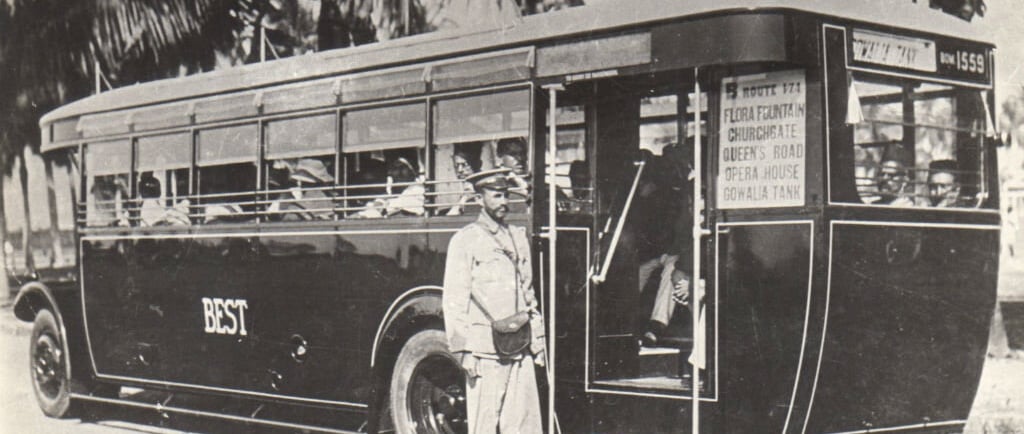Do You Know When and Where the First Bus Ran in India
#DoYouKnow, #FirstBusInIndia, #IndianTransportHistory, #PublicTransportIndia, #BESTMumbai, #BusJourneyIndia, #IndiaMobility, #TransportMilestones, #IndianHistory, #SustainableTravel
KNOWLEDGE & EDUCATION
7/25/20252 min read


Public transport is an essential thread in the fabric of India’s urban and rural connectivity. But have you ever wondered when the first bus service started in this vast country? Long before metro trains and app-based cabs, a simple motorbus became the symbol of progress in colonial India.
Let’s dive into the history of how India’s bus journey began — a story of wheels that started turning more than a century ago.
1. The First Bus in India – A Historic Ride in Mumbai
The first ever bus service in India began on 15 July 1926 in Bombay (now Mumbai).
It was started by the Bombay Electric Supply & Transport (BEST) company, then known as Bombay Electric Supply and Tramways Company Limited.
The inaugural route ran between Afghan Church (Colaba) and Crawford Market, a distance of about 8 kilometers.
This marked the beginning of modern motorized public transport in India.
2. Who Made It Happen?
The introduction of the bus service was a response to the growing population and the limitations of tram services in Bombay. The government and private sector saw buses as a flexible solution for intra-city mobility.
The earliest buses were:
British-built, manually operated,
Had wooden bodies and limited seating,
Operated with a conductor and driver, and
Initially faced public skepticism, as people were more comfortable with trams and horse-drawn carriages.
3. Public Reaction and Popularity
Though hesitant at first, the people of Bombay quickly embraced the new system:
Buses reached areas not covered by trams.
They offered reliable and timely travel.
In just a few years, demand skyrocketed, prompting expansion into other routes and cities.
4. Bus Services Expand Across India
After Bombay’s success:
Madras (now Chennai) launched its bus service in 1927.
Delhi followed in the 1930s.
Over time, State Transport Corporations (STCs) were formed post-independence to regulate and expand bus transport in each state.
Some key milestones:
KSRTC (Karnataka State Road Transport Corporation) started in 1961.
MSRTC (Maharashtra) and APSRTC (Andhra Pradesh) soon followed.
The Delhi Transport Corporation (DTC) became one of the largest city bus networks in Asia.
5. Evolution of Bus Technology
From simple diesel engines to modern electric buses, Indian bus transport has seen immense transformation:
Introduction of low-floor buses for senior citizens and differently-abled.
Air-conditioned buses for urban comfort.
Use of CNG, hybrid, and electric buses for environmental sustainability.
Digital ticketing and real-time tracking have modernized the experience.
6. Current Scenario
Today, buses in India:
Operate in over 7000 towns and cities.
Carry over 70 million passengers daily.
Are managed by both government and private operators.
Support major employment and contribute to carbon-efficient mobility.
Cities like Bangalore (BMTC), Mumbai (BEST), and Delhi (DTC) run extensive bus networks, while interstate services connect rural India with urban hubs.
7. Challenges Faced by Bus Systems
Despite their importance, bus services face issues like:
Overcrowding, especially during peak hours.
Aging fleets needing constant maintenance.
Poor last-mile connectivity.
Competition from auto-rickshaws, cabs, and metros.
Efforts are being made to revamp bus infrastructure, introduce Bus Rapid Transit Systems (BRTS), and ensure inclusivity and safety.
Conclusion
The first bus journey in India wasn’t just a transport event — it was a social revolution on wheels. From 1926 to today, buses have played a crucial role in India’s economic, social, and urban development. As we now shift to electric and AI-driven transport, the humble bus still remains a symbol of public empowerment and accessibility.
Knowledge
Empowering minds with reliable educational content daily.
Newsletter Signup
© 2025 DoYouKnow. All rights reserved.
Stay Ahead of the Trends – Join Our Newsletter
